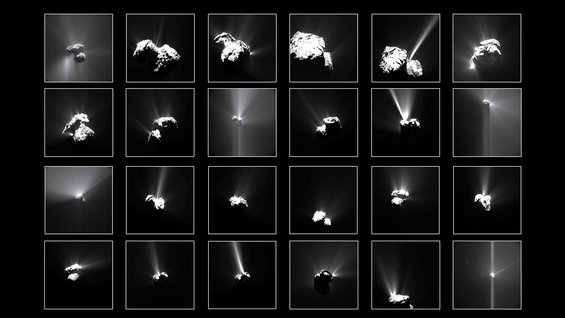Mass Spectrometer Electronics
Summary
Mission: To determine the elemental, isotopic and molecular composition of the Comet 67P/Churyumov–Gerasimenko’s atmosphere.
Challenge: Making a wide variety of detailed observations of the comet’s atmosphere despite large changes in the ion and gas flux as the comet changes activity between aphelion and perihelion.
Solution: The mass spectrometry equipment carried by ROSINA is flexible — capable of a very wide mass range, high mass resolution, and high sensitivity to accommodate very large differences in ion and neutral gas concentrations
Value: By monitoring and characterizing the different phases of comet activity from aphelion to beyond perihelion, ROSINA will augment our understanding of cometary behavior.
Lab: SPRL as part of an International collaboration with labs including Max Planck Institut für Aeronomie, Lockheed Palo Alto Research Laboratory, and Physikalisches Institut, Universität Bern, among others.
Scientific Objective
ROSINA’s primary objective is to determine the elemental, isotopic and molecular composition of the comet’s atmosphere and ionosphere, as well as the temperature and bulk velocity of the gas and the homogeneous and inhomogeneous reactions of the gas and ions in the dusty cometary atmosphere and ionosphere. Further objectives are to investigate the origin of comets, the relation between cometary and interstellar material, and the implications for theories on the origin of the Solar System. Another objective is to investigate possible asteroid outgassing and establish a relationship between comets and asteroids.
To accomplish these demanding objectives, ROSINA has unprecedented capabilities, including a wide mass range from 1 amu (Hydrogen) to >300 amu (organic molecules); a high mass resolution (>3000 m/Δm) [ability to resolve CO from N2 and 13C from 12CH]; a wide dynamic range (1010) and high sensitivity (>10-5 A/mbar) to accommodate large differences in ion and neutral gas concentrations and large changes in the ion and gas flux as the comet changes activity between aphelion and perihelion; and the ability to determine the outflowing cometary gas flow velocities. Correlated observations with the dust investigations, the magnetometer and the surface science package further augment the scientific return from ROSINA.
Contributions
Further reading:

